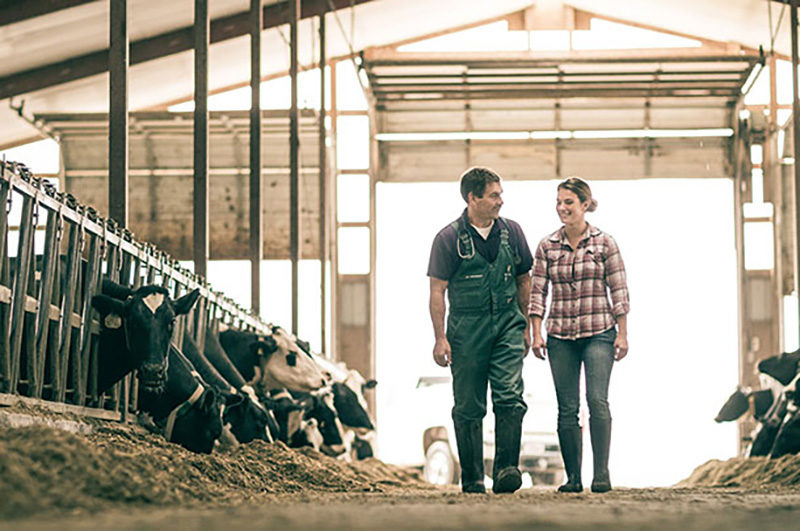Responsible use of antibiotics plays a significant role in helping protect animal and human health. Proper training on use and administration of antibiotic products play a key role in ensuring all antibiotics are used responsibly and administered appropriately to avoid violative residues. Dairies have made significant improvements toward decreasing the number of residue violations in milk, specifically a 71% reduction in bulk tank milk residues in the U.S. food supply from 2008 to 2021.1,2 Despite this, dairy producers are also beef producers and still have work to do. Culled dairy cows accounted for 70% of residue violations from inspector-generated samples across all species of animals from January 2021 to March 2021.3 Culled dairy cows consistently account for 9.5%-9.7% of cattle slaughtered annually.4,5 Dairy producers, under the guidance of their veterinarians, should continue to focus on steps that mitigate the risk of residues to protect food integrity.
There are four things you should focus on to minimize your risk of residue violations in meat from cull dairy cows.
1. INVOLVE YOUR VETERINARIAN IN ALL TREATMENT DECISIONS
Without veterinary involvement, your dairy’s risk for residue violations increases significantly. According to the U.S. Food and Drug Administration, 70% of cases involving violative drug residues had no veterinary involvement in treatment or protocol development.6 Your veterinarian is the expert in choosing the correct products that prevent and treat disease, as well as how to prevent residues by complying with label directions for use.
This means he or she should be engaging with you not only in setting treatment protocols but also in determining what animals are treated in the first place. Regular visits and communication with your veterinarian — an established partnership called a veterinarian-client-patient relationship (VCPR) — allows your veterinarian to maintain a relationship with you and your key employees and have a good understanding of your animals and preventive care to provide thorough guidance and recommendations.
2. SET AND FOLLOW PROTOCOLS
Even if your dairy has set protocols, a study found an estimated 43% of employees administering treatments on well-managed dairies were not following protocols when observed.7 Compliance matters for treatment success and protecting the food supply. Talk with your veterinarian to make sure there aren’t any outdated or missing protocols and that they are easy to understand and follow. Regularly train employees who administer medications on accuracy of diagnosis and review proper protocol application. Also, effective protocols should include steps for how to give the medicine, including following label instructions, the proper route of administration and administering products for appropriate duration of therapy.
3. KEEP ACCURATE TREATMENT RECORDS
Inaccurate or incomplete records can be big contributors to human errors at the farm level that can lead to residues, including misidentified animals, administering the incorrect dose, treating the animal for an improper duration, or even animals being moved from the hospital pen or sent to market before the withdrawal period has passed. After treating a cow, record all the information about the cow and treatment administered in your record-keeping system. This will help the veterinarian and herd manager know how well treatments are working and provide important information to help avoid mistakes and, therefore, avoid residues.
4. RESPECT THE BEEF MARKET
The beef market is an opportunity to place another quality food product into consumers’ hands, and it should be treated with the same respect we give the milk market. You can’t make healthy beef from unhealthy cows. Animals should be healthy, not simply past the residue withholding period, before being considered viable candidates for the beef market. The first step is to appropriately identify the disease process at hand and evaluate which animals should and shouldn’t be treated. Then, work with your veterinarian and herd manager to establish guidelines for identifying animals that leave the farm intended for human consumption.
Thanks to the hard work of dairy veterinarians and producers, the industry has made great strides. However, a single violation can erode consumer confidence in milk and meat. That’s why it’s critical to work with your veterinarian to establish and train employees on protocols, ensure proper recordkeeping, and only send high-quality healthy cull cows to market that are suitable for human food. Remember: You are in the beef business, too.
For more tips on avoiding residues, review these additional resources and ask your Zoetis representative about the Residue Free Guarantee™.
References
1. National Milk Drug Residue Data Base Annual Report FY2008.
2. National Milk Drug Residue Data Base Annual Report FY2021.
3. USDA FSIS National Residue Program Quarterly Report (Jan-Mar 2021).
4. National Agriculture Statistic Services: Livestock Slaughter Annual Reports 2018.
5. National Agriculture Statistic Services: Livestock Slaughter Annual Reports 2020.
6. Cera DA. 2011 Drug Residues in Animal Derived Foods. Division of Compliance, Center for Veterinary Medicine, FDA presentation.
7. Wenz, JR. Good Health Records, The Foundation of Consistent, Effective Dairy Health Management. Available at https://www.slideshare.net/DAIReXNET/wenz-webinar. Opens in a new window Accessed Oct. 2, 2018.






